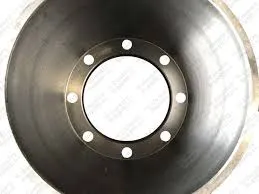
-
 Afrikaans
Afrikaans -
 Albanian
Albanian -
 Amharic
Amharic -
 Arabic
Arabic -
 Armenian
Armenian -
 Azerbaijani
Azerbaijani -
 Basque
Basque -
 Belarusian
Belarusian -
 Bengali
Bengali -
 Bosnian
Bosnian -
 Bulgarian
Bulgarian -
 Catalan
Catalan -
 Cebuano
Cebuano -
 Corsican
Corsican -
 Croatian
Croatian -
 Czech
Czech -
 Danish
Danish -
 Dutch
Dutch -
 Iňlis
Iňlis -
 Esperanto
Esperanto -
 Estonian
Estonian -
 Finnish
Finnish -
 French
French -
 Frisian
Frisian -
 Galician
Galician -
 Georgian
Georgian -
 German
German -
 Greek
Greek -
 Gujarati
Gujarati -
 Haitian Creole
Haitian Creole -
 hausa
hausa -
 hawaiian
hawaiian -
 Hebrew
Hebrew -
 Hindi
Hindi -
 Miao
Miao -
 Hungarian
Hungarian -
 Icelandic
Icelandic -
 igbo
igbo -
 Indonesian
Indonesian -
 irish
irish -
 Italian
Italian -
 Japanese
Japanese -
 Javanese
Javanese -
 Kannada
Kannada -
 kazakh
kazakh -
 Khmer
Khmer -
 Rwandese
Rwandese -
 Korean
Korean -
 Kurdish
Kurdish -
 Kyrgyz
Kyrgyz -
 Lao
Lao -
 Latin
Latin -
 Latvian
Latvian -
 Lithuanian
Lithuanian -
 Luxembourgish
Luxembourgish -
 Macedonian
Macedonian -
 Malgashi
Malgashi -
 Malay
Malay -
 Malayalam
Malayalam -
 Maltese
Maltese -
 Maori
Maori -
 Marathi
Marathi -
 Mongolian
Mongolian -
 Myanmar
Myanmar -
 Nepali
Nepali -
 Norwegian
Norwegian -
 Norwegian
Norwegian -
 Occitan
Occitan -
 Pashto
Pashto -
 Persian
Persian -
 Polish
Polish -
 Portuguese
Portuguese -
 Punjabi
Punjabi -
 Romanian
Romanian -
 Russian
Russian -
 Samoan
Samoan -
 Scottish Gaelic
Scottish Gaelic -
 Serbian
Serbian -
 Sesotho
Sesotho -
 Shona
Shona -
 Sindhi
Sindhi -
 Sinhala
Sinhala -
 Slovak
Slovak -
 Slovenian
Slovenian -
 Somali
Somali -
 Spanish
Spanish -
 Sundanese
Sundanese -
 Swahili
Swahili -
 Swedish
Swedish -
 Tagalog
Tagalog -
 Tajik
Tajik -
 Tamil
Tamil -
 Tatar
Tatar -
 Telugu
Telugu -
 Thai
Thai -
 Turkish
Turkish -
 Turkmen
Turkmen -
 Ukrainian
Ukrainian -
 Urdu
Urdu -
 Uighur
Uighur -
 Uzbek
Uzbek -
 Vietnamese
Vietnamese -
 Welsh
Welsh -
 Bantu
Bantu -
 Yiddish
Yiddish -
 Yoruba
Yoruba -
 Zulu
Zulu
drum brake to disk brake conversion
The Conversion from Drum Brakes to Disc Brakes
In the world of automotive engineering, brake systems play a crucial role in vehicle safety and performance. Among the various types of braking systems, drum brakes and disc brakes are the most common. While drum brakes were once the standard, many modern vehicles are making the switch to disc brakes. This article explores the reasons and benefits of converting from drum brakes to disc brakes.
Drum brakes operate using a set of shoes that press against the inside of a rotating drum, creating friction to slow down the vehicle. While effective, they have certain limitations. Over time, drum brakes can experience brake fade, especially under heavy use, as the heat generated can reduce their effectiveness. Additionally, they tend to retain water and mud, leading to corrosion and reduced performance.
In contrast, disc brakes utilize a flat disc, or rotor, and brake pads to create friction. This design allows for better heat dissipation, reducing the chances of brake fade. Disc brakes also offer improved stopping power and more consistent performance, particularly in wet or adverse conditions. These advantages make disc brakes increasingly popular, especially in high-performance vehicles.
drum brake to disk brake conversion

The process of converting from drum brakes to disc brakes involves several steps. First, it’s essential to choose a suitable disc brake kit designed for the specific vehicle model. This kit typically includes rotors, calipers, and pads. Next, removal of the old drum brake assembly is necessary, followed by the installation of the new components. Proper alignment and adjustment are crucial to ensure the brakes function effectively and safely.
Another significant advantage of disc brakes is maintenance. Disc brake systems are generally easier to inspect and replace than drum brakes, as most components are accessible without requiring major disassembly. This aspect translates into lower long-term maintenance costs and improved reliability.
Many enthusiasts and mechanics advocate for converting to disc brakes not only for performance but also for safety. Improved stopping power can significantly enhance a vehicle’s responsiveness, particularly in emergency situations. Additionally, as more manufacturers transition to disc brakes, parts and support for drum brakes become less abundant, making the conversion a practical choice for those looking to upgrade.
In conclusion, converting from drum brakes to disc brakes can yield substantial benefits in terms of performance, safety, and maintenance. While the initial investment may be higher, the long-term advantages make it a worthwhile consideration for both everyday drivers and automotive enthusiasts alike.
-
What Are Drum BrakesHabarlarJul.07,2025
-
Understanding Brake Drum MaterialHabarlarJul.07,2025
-
Semi-Trailer Brake Drum: A Key Component for Extreme Loads and Long-Distance TransportHabarlarJul.07,2025
-
Drum Brake Pads for SaleHabarlarJul.07,2025
-
Brake Drums for SaleHabarlarJul.07,2025
-
Brake Drum ManufacturerHabarlarJul.07,2025
-
Aluminum Brake Drums: The Future of High-Performance CarsHabarlarJul.07,2025
